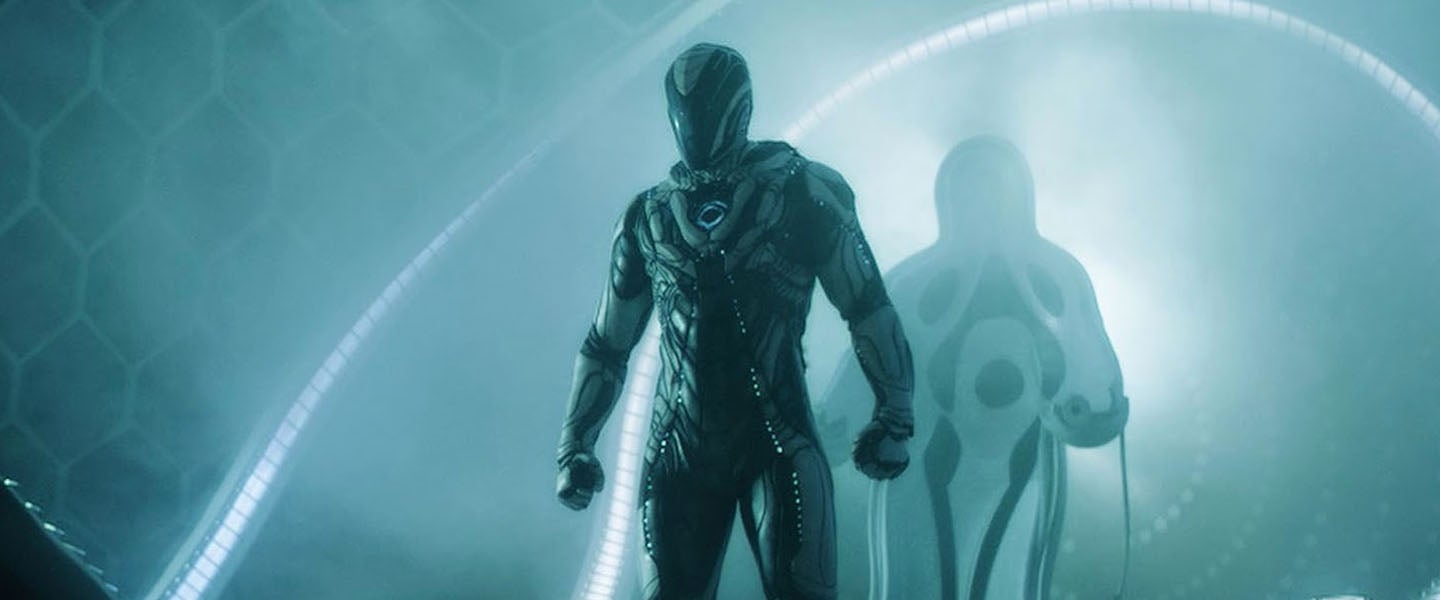The Lego Movie was such a pleasant surprise when it hit theaters in 2014. Who would’ve expected that a movie based on building blocks — released in February, no less — could be so sophisticated, crowd-pleasing and wise? The Lego Movie isn’t just a fast-paced and funny animated adventure. It’s a smart take on creativity, individuality and the relationship between fathers and sons.
Overall, though, toy-based movies have a mostly miserable track record, either flopping at the box office or bombing with the critics — or both. When the films are aimed at a male audience, they tend to be especially bad: more interested in thudding action, big weapons and low comedy than the nuanced depiction of childhood and heroism in The Lego Movie. With The Lego Movie 2: The Second Part hitting theaters this weekend, here’s a look back at nearly 35 years’ worth of misbegotten attempts to turn manly action figures, games and trading cards into blockbusters.
He-Man and She-Ra: The Secret of the Sword (1985) / Masters of the Universe (1987)
In 1982, the toy company Hasbro revamped its dormant G.I. Joe action figure line, and in the process concocted a cross-platform marketing strategy that would become the decade’s dominant model for children’s entertainment. The new, smaller G.I. Joe action figures were supported by a Marvel comic book and a TV cartoon — the latter of which launched as an innovative five-part syndicated miniseries in 1983. Eventually, the animated show spun off into a 1987 straight-to-VHS movie.
Hasbro had effectively inverted the model that served the Planet of the Apes, The Six Million Dollar Man and Star Wars licensees so well in the 1970s. Rather than making toys based on movies, comics and TV shows, the major companies would begin making movies, comics and TV shows to sell toys.
Hasbro had plenty of competitors, thanks to the Reagan-era FCC’s relaxation of the rules separating kids’ TV programming from shameless shilling. Mattel introduced its Masters of the Universe toy line in 1982, with its own accompanying comics and syndicated cartoon; and the TV series’ popularity inspired a spin-off, She-Ra: Princess of Power, which Mattel and its animation studio partner Filmation debuted as a theatrical feature, edited together from not-yet-aired episodes.
He-Man and She-Ra: The Secret of the Sword suffers from stiff animation and an almost incomprehensibly dense mythology, involving a long-lost twin sister from another planet/dimension. But while it failed to become a huge hit, it’s at least true to what kids loved about Masters of the Universe. The Secret of the Sword combines science-fiction super-heroics with high fantasy, stealing shamelessly from Conan the Barbarian and Star Wars. It features cool weapons, weird landscapes and mega-athletic (and scantily clad) men and women.
The same can’t be said of the 1987 live-action Masters of the Universe movie, produced by the cheese-merchants at Cannon Films (about a year or two too late for the He-Man craze). The art direction is outstanding, the special effects aren’t bad for the mid-1980s and Dolph Lundgren and Frank Langella are plenty game in their respective roles of He-Man and his arch-nemesis Skeletor. But rather than trusting the original material, the filmmakers shift much of the action from outer space to Earth. Unsurprisingly, the picture tanked, failing to connect either with the series’ dwindling fanbase or with adult fantasy fans.
The Transformers: The Movie (1986) / GoBots: Battle of the Rock Lords (1986)
The recent run of live-action Transformers movies is easily the most successful example of a tiny-toy-to-big-screen adaptation. (In terms of the box office, that is; creatively, the films are mostly crummy, aside from last year’s Bumblebee.) But this wasn’t always the case with the Transformers franchise. In 1986, during the heyday of the “TV cartoon as sales pitch” era, the producers and animators of the hit syndicated series The Transformers threw a healthy chunk of change into a movie, featuring better-than-average animation and a voice cast that included Judd Nelson (!), Leonard Nimoy (!!) and Orson Welles (!!!).
Fans of the original cartoon tend to have a lot of affection for the film. The Transformers: The Movie is essentially a longer, more epic episode, featuring last-ditch battles and characters dying. But there was no real American multiplex market for such a darkly shaded animated science-fiction feature in 1986. The picture found more of an audience on home video — and later achieved an unexpected boost in pop culture endurance when writer-director Paul Thomas Anderson had his Boogie Nights hero Dirk Diggler sing Stan Bush’s Transformers rock anthem “The Touch.”
A few months before The Transformers: The Movie flopped, Tonka’s Transformers-esque toys the GoBots — and its accompanying Hanna-Barbera-produced syndicated series Challenge of the GoBots — washed out on the big-screen as well. Despite featuring the voices of Margot Kidder (!), Roddy McDowall (!!) and Telly Savalas (!!!), GoBots: Battle of the Rock Lords comes across as cruddy-looking and juvenile, even by the standards of the genre. The movie was meant to hype up a whole new “Rock Lords” toy line; and as you may have noticed, movie studios today aren’t lining up to make $200 million Rock Lords movies.
The Garbage Pail Kids Movie (1987) / Mars Attacks! (1996)
Too old to play with action figures? Well, how do you feel about trading cards? The venerable baseball card company Topps was responsible for both the original Mars Attacks line (introduced in 1962) and the grotesque Cabbage Patch Kids parody Garbage Pail Kids (launched as a Wacky Packages spin-off in 1985). The two series have a lot in common. Both featured artwork from some of the best comic book artists of their era: Wally Wood and Norman Saunders for Mars Attacks, and Art Spiegelman (Maus) and Mark Newgarden for Garbage Pail Kids. Both were controversial, too, singled out by concerned parents for their sick humor.
And, of course, both inspired movies slammed by critics. In the 20-plus years since director Tim Burton squandered over $70 million of Warner Bros.’ money on his frenetic Mars Attacks!, the film has actually developed more of a following. There’s undeniably a wealth of imagination and bratty rebellion in the way Burton fills the screen with big stars (including Jack Nicholson, Glenn Close, Pam Grier, Michael J. Fox and Sarah Jessica Parker), and the way he loads every frame with the same excess of visual information as the trading cards. But in the year when Independence Day became a massive hit, U.S. audiences weren’t interested in an irreverent alien invasion story.
As for The Garbage Pail Kids Movie… hoo boy. The original cards’ satirical edge gets lost amid the film’s cheap-looking costumes and relentless gross-out jokes. Watching The Garbage Pail Kids Movie is like sitting through an amateurish amusement park kiddie show, if the performer’s masks and outfits had been left sitting out in the summer sun for 15 years. It’s pure nightmare fuel.
Dungeons & Dragons (2000)
It’s probably unfair to refer to the role-playing game Dungeons & Dragons as “for boys,” given that lots of women are into D&D — and more and more in recent years. That said, the 2000 Dungeons & Dragons movie is the worst kind of dude-centric cinema, giving most of the heroic business to two “chaotic good” male thieves, played by Justin Whalin and Marlon Wayans. Hideous computer-generated effects and an off-the-shelf sword-and-sorcery story failed to capture any of the deeper psychological and mythological elements that made the game the flagship RPG. The big-screen version just lazily slaps a popular title atop some generic kingdoms-and-creatures nerdery.
Battleship (2012)
The promise of a big-screen story about the Transformers didn’t lure in audiences in 1986, but moviegoers came in droves to director Michael Bay’s version in 2007. Two years later, the big-budget action-adventure G.I. Joe: The Rise of Cobra became a surprise blockbuster. And so, by the time the 2000s gave way to the 2010s, media companies were licensing toys and games left and right — from Troll dolls to Ouija boards.
Thus, in 2012 we ended up with an enormously expensive movie based on the cheap plastic military/logic game Battleship. Rather than making a film about a methodical naval operation, director Peter Berg and his screenwriters added evil invaders from outer space — perhaps to avoid offending any potential Earthly enemies, like the Russians, the Chinese or terrorist groups. Outside of the occasional special edition, when has Battleship ever been about aliens? The Battleship movie’s brand-name cash-in was a box office disappointment, because hardly anybody could tell it was based on a board game.
Robosapien: Rebooted (2013)
One of the most popular toys of the 2004 Christmas shopping season, the programmable robot buddy Robosapien was originally supposed to star in a motion picture by the end of the decade. Instead, due to rights issues, production delays and a fluctuating market for flicks based on toys, the film was stuck on a shelf until 2013. These days, not only is this E.T. ripoff (about a lonely boy befriending a lost piece of anthropomorphic tech) largely forgotten, but the gadget itself hasn’t exactly remained a playroom staple.
Max Steel (2016)
And so we come back to Mattel, and to the persistent insidiousness of the major toy companies’ early-1980s multiplatform strategy. First introduced in 1997, Mattel’s “Max Steel” toy line inspired two animated series before getting its own live-action movie. In the film, Ben Winchell plays Max McGrath, who discovers secrets about his scientist father’s work — including the existence of a helpful flying alien robot named Steel, who helps the boy with his sudden, uncontrollable ability to generate liquid energy.
The film plays like a pilot for a TV show — similar to the likes of Teen Wolf or Buffy the Vampire Slayer, where superpowers serve as a metaphor for coming-of-age. But like too many of the movies on this list, it mostly feels like an overlong commercial. Max Steel — like so many doomed projects before it — isn’t about what the toys mean to the kids who play with them. It’s about reminding the youngsters that they’re still on sale.

